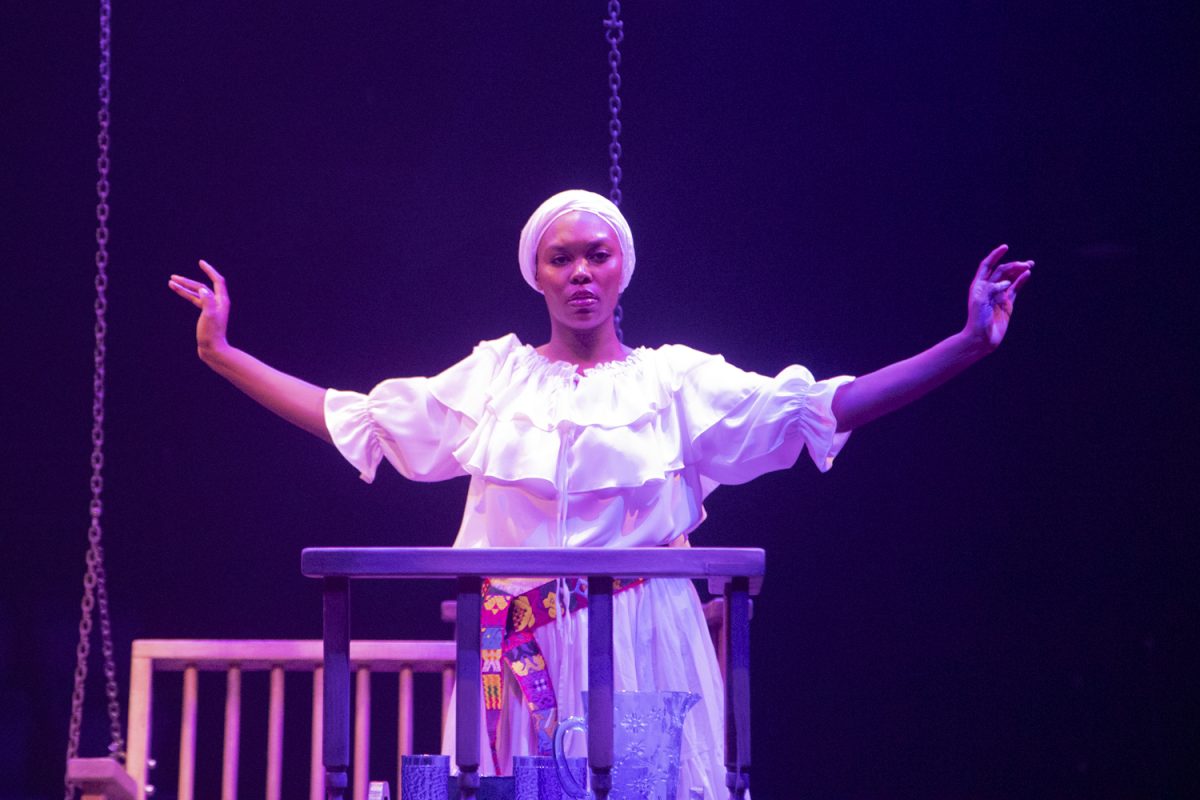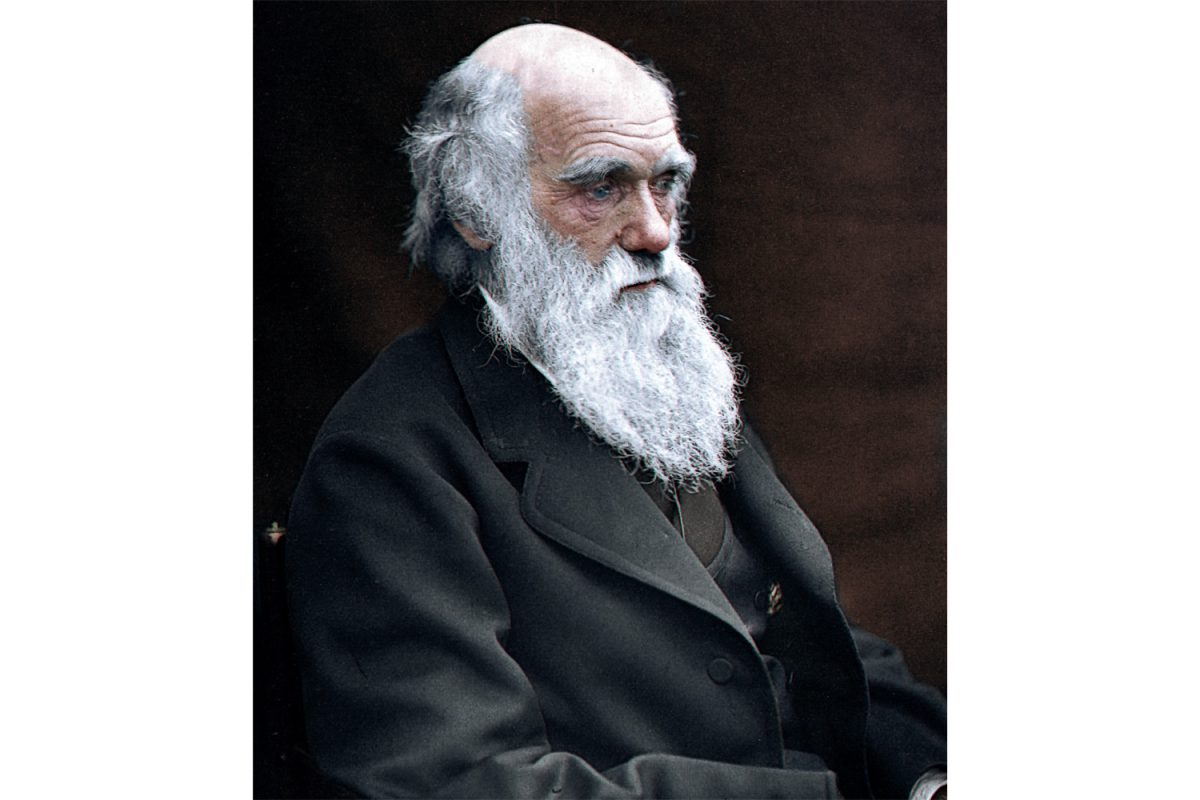It’s an early evening on the Pentacrest, and an otherworldly bartender/minstrel/shaman sits underneath a large tree in front of the Old Capitol. He strums his acoustic guitar, and he pulls out hand puppets, which act out a tale to those who dare draw close enough to listen.
This Kurt Cobain-esque, gruff-looking man with a bit of magic up his sleeves is the Wanderer — and soon his audience will follow the pied piper through Iowa City to a secret location filled with lingerie, masks, and Victorian dresses.
In this sacred space, they will witness and participate in one scorned woman’s ritual of heartbreak as she magically transforms into a revenge-seeking demon.
“The performers are not so much telling a story as they are taking the audience along on a ritually induced archetypal-mystical experience,” said director David Hanzal, an M.F.A. student in directing at the UI.
The UI performance of RED//a thing about the heart will take a new twist on the traditional play form and provide an interactive and mysterious production at 6 p.m. today, Friday, and Saturday on the Pentacrest. There will be an additional performance at 5 p.m. on Nov. 4. Admission is free for UI students and faculty, $5 for the general public.
The journey through Iowa City and the character of the Wanderer was one of the first things the developmental team talked about in creating the production.
The director, playwrights, and dramaturge wanted the audience members to feel as if they were leaving the expected behind but could also identify with the character.
UI senior Zachary Isom plays the Wanderer, who acts as the entry into a magical world in which he bridges the gap between dreams and reality.
“I’m kind of a conduit and a best buddy for [the audience],” he said.
Isom, experiencing his first performance in the Theater Department, said the biggest challenge will be the journey through Iowa City.
“I think my goal with this is to have people laugh and emotionally connect in some way,” he said.
He was first attracted to the work when colleague and production dramaturge Sarah Johnson introduced him to No Theater, a classical Japanese drama that has been performed since the 14th century.
From there, Hanzal dove in to theoretical studies of No in addition to holy theater in both the East and the West.
“With this project, I wanted to explore No Theater and its aesthetic values, theatrical techniques, and portrayal of narrative in a way that is meaningful for a contemporary Western audience,” he said.
With the help of Johnson and playwrights Katharine Sherman and Alyssa Perry, the Western adaptation of RED//a thing about the heart was created.
The most interesting element of this production is that it will not be performed in the Theater Building, as are most works in the department.
“We are going after holy theater, and the place the women go to pray [in the work] is their own sacred space, so we wanted the audience to have that,” said UI senior Perry. “It’s not to say the spaces in the Theater Building aren’t sacred, but we wanted to give the audience the sense of finding this little nook in a crazy area.”
RED//a thing about the heart is also a multidisciplinary performance work that incorporates poetic text, dance, live music, masks, and puppets.
“This is a devised piece in which the text is just one element among many in the play,” Johnson said. “Our actors are actually creators of a lot of this experience, and they came up with a lot of the percussion and music.”
The performers create a live soundscape through percussion, vocal music, rhythmic breathing, panting, clapping, punching, and stomping.
All of these elements help to provide the spiritual and holy concept on which the production is grounded.
During rehearsals, Hanzal said, everyone was encouraged to, and expected to, improvise and generate material in a fast-paced yet positive environment.
Most of what was created in the rehearsal room led to new directions that required the playwrights to bring in new pages of text for the ensemble.
“Oftentimes, you get to be more invested in the process [when it’s collaborative],” Perry said. “You get to be a little more involved in the shaping of things.”
Isom agreed, saying Hanzal’s collaboration in this work is one aspect that was most interesting to him.
“In the program, everyone is a contributor, and I think in that way, people who might not even have a single line bring so many beautiful ideas to the play,” Isom said. “We have been working with this clay of our play, and by the time we get into the space, it just needs a little shaping.”
Johnson said the students have been committed to this new style of theater, and the process has been excellent so far.
“It’s a fun thing for students to learn and create in a new style,” she said. “I think I’m just really excited to have an audience experience a little bit of nontraditional theater, because that will make it really alive.”
For playwright Perry, watching her words come to life on stage has been what she described as surreal.
“I think if you’re lucky and have a really great group of people, it is always going to be way cooler than you hoped,” she said. “The words are only so much, because there is much more to be created in the room that is just beautiful.”






